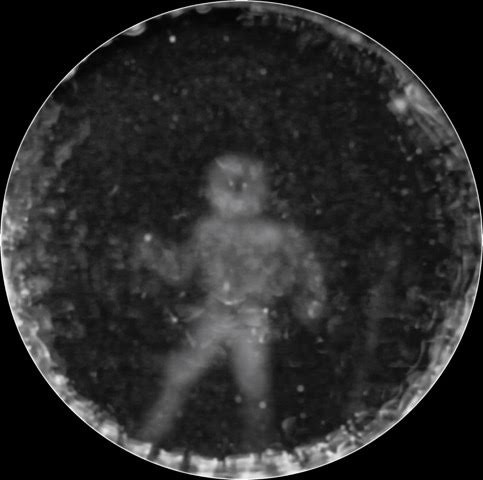Scientists Create First Image Ever of How Dolphins See Humans
| Ana Verayo | | Dec 09, 2015 06:40 AM EST |
(Photo : SpeakDolphin.com) This is the first 3D echolocation image produced, as dolphins perceive humans.
For the first time ever, scientists have reproduced an image of what a dolphin would see when it encounters a male diver.
This image projected what the dolphin is seeing, when a submerged man was detected by the dolphin via echolocation, with somewhat accurate details. Scientists now believe that dolphins even share these images with each other as a previously unknown marine mammal form of communication.
Like Us on Facebook
According to lead researcher Jack Kassewitz from SpeakDolphin.com, this recent breakthrough left us speechless and and now it can be safely assumed that dolphins use a "sono-pictorial" type of language where they use pictures to share with each other, providing exciting clues about inter species communications.
This new study is conducted in the Dolphin Discovery Center located in Mexico along with colleague Jim McDonough who submerged himself in the research pool with the dolphin test subject "Amaya". McDonough avoided using a breathing apparatus that may produce bubbles to avoid disrupting the recreation of the image later.
When Amaya directly beamed her echolocation on McDonough, the team used their high specification audio equipment in order to record this signal. Researchers then sent this recording to CymaScope Laboratory in the U.K., where acoustic physics researcher John Stuart Reid used this signal to make an imprint on a water membrane where it was later enhanced digitally as the final image.
Reid explains how CymaScope captured the dolphin's conceived images and then revealing the holographic qualities of sound in relation to the water. The final image revealed a fuzzy silhouette of an almost full man however, with no distinct facial features.
Apparently, Amaya the dolphin has been echolocating McDonough from seven feet away before she hovered closer, where researchers captured her more distant signals.
Researchers conclude that using CymaScope to capture what the dolphin saw, this research shows how dolphins can at least see a full silhouette via their echolocation sound senses. However, scientists still believe that these dolphin echolocation signals can still reveal clearer signals and more detailed mental images since human technology still cannot match with the marine mammals' signals.
Tagsimage dolphins humans, how do dolphins see humans, dolphins echolocation, Dolphins, Echolocation
©2015 Chinatopix All rights reserved. Do not reproduce without permission
EDITOR'S PICKS
-

Did the Trump administration just announce plans for a trade war with ‘hostile’ China and Russia?
-

US Senate passes Taiwan travel bill slammed by China
-

As Yan Sihong’s family grieves, here are other Chinese students who went missing abroad. Some have never been found
-

Beijing blasts Western critics who ‘smear China’ with the term sharp power
-

China Envoy Seeks to Defuse Tensions With U.S. as a Trade War Brews
-

Singapore's Deputy PM Provides Bitcoin Vote of Confidence Amid China's Blanket Bans
-

China warns investors over risks in overseas virtual currency trading
-

Chinese government most trustworthy: survey
-

Kashima Antlers On Course For Back-To-Back Titles
MOST POPULAR
LATEST NEWS
Zhou Yongkang: China's Former Security Chief Sentenced to Life in Prison

China's former Chief of the Ministry of Public Security, Zhou Yongkang, has been given a life sentence after he was found guilty of abusing his office, bribery and deliberately ... Full Article
TRENDING STORY

China Pork Prices Expected to Stabilize As The Supplies Recover

Elephone P9000 Smartphone is now on Sale on Amazon India

There's a Big Chance Cliffhangers Won't Still Be Resolved When Grey's Anatomy Season 13 Returns

Supreme Court Ruled on Samsung vs Apple Dispute for Patent Infringement

Microsoft Surface Pro 5 Rumors and Release Date: What is the Latest?










